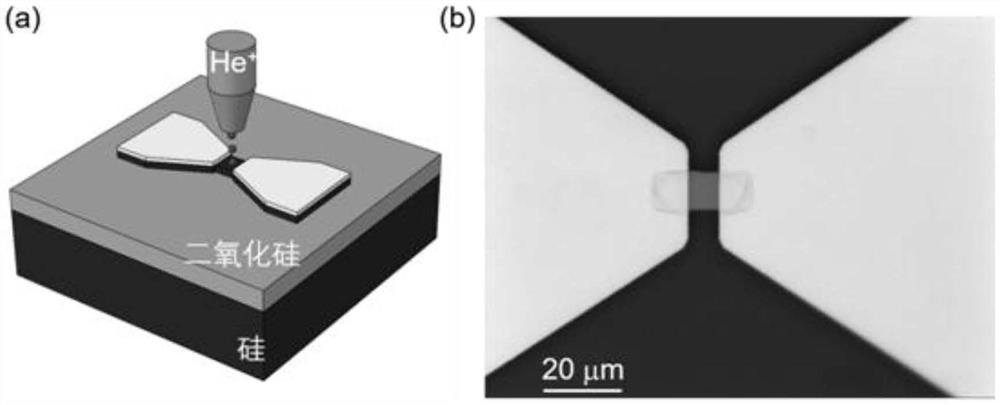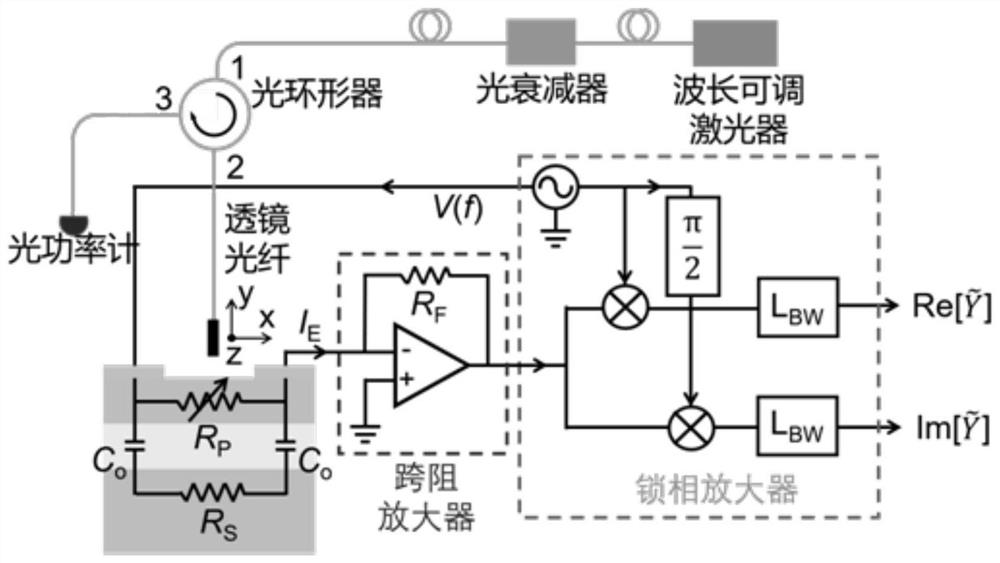Method for improving infrared response of silicon-based detector through helium ion implantation
An infrared response, helium ion technology, used in semiconductor devices, sustainable manufacturing/processing, electrical components, etc., can solve the problems of inability to detect infrared band optical signals, weak response in infrared band, etc., to improve the detection spectral range and broaden the detection range. spectral range, the effect of improving the infrared response
- Summary
- Abstract
- Description
- Claims
- Application Information
AI Technical Summary
Problems solved by technology
Method used
Image
Examples
Embodiment approach 1
[0039] See figure 2 , Using a helium ion microscope helium ion implantation of silicon, silicon-based photoelectric when the optical power incident on the detector is changed, and the effects of surface defect states absorption state absorbing effect simultaneous action of the device will cause the photosensitive region admittance change. Silicon photodetector for monitoring the optical power of the infrared band can be achieved based on this phenomenon.
[0040] image 3 Schematic experiment optical power monitoring photodetector is a silicon implanted helium ions. Return to the lock signal outputted through the transimpedance amplifier (TIA) after amplification; lock-in amplifier outputs a variable frequency sinusoidal voltage, voltage from one end of the titanium electrode as the drive signal input device, and then output through the other end of the titanium electrode phase amplifier demodulates the converted admittance worth demodulation device.
Embodiment approach 2
[0042] After the helium ion implantation of the silicon photodetector to recalibrate: relationship obtained by the test device and the driving voltage source admittance operating frequency different light power, to find the most obvious change in the admittance as a working frequency point; determine the operating frequency again after the relationship between the optical power calibration admittance change at different wavelengths.
[0043] Figure 4The relationship between the silicon-based photodetector is introduced and the drive frequency of the silicon-based photodetector. Preliminary screening can be performed based on the features of these curves to confirm the appropriate helium ion implantation dose.
[0044] Figure 5 Inject 0.01ionS / Nm for helium ion 2 The silicon-based photodetector reflected optical power and the two-dimensional scaver map of the admission. With this figure, you can compare the location and contour of the device electrode and the photosensitive reg...
PUM
 Login to View More
Login to View More Abstract
Description
Claims
Application Information
 Login to View More
Login to View More - R&D
- Intellectual Property
- Life Sciences
- Materials
- Tech Scout
- Unparalleled Data Quality
- Higher Quality Content
- 60% Fewer Hallucinations
Browse by: Latest US Patents, China's latest patents, Technical Efficacy Thesaurus, Application Domain, Technology Topic, Popular Technical Reports.
© 2025 PatSnap. All rights reserved.Legal|Privacy policy|Modern Slavery Act Transparency Statement|Sitemap|About US| Contact US: help@patsnap.com



